Experts & Views
Live Blog: 10th GNLU International Moot Court Competition (GIMC)- 7th to 11th February, 2018
GNLU TO HOST 10th EDITION OF GIMC
GIMC is back, and it is bigger than ever! Gujarat National Law University (GNLU) has been conducting the GNLU International Moot Competition for a decade now, and this edition is thus, truly special. The moot shall be conducted from 7th to 11th February on the GNLU Campus. This is the only Trade Law moot in India simulating the dispute settlement process of the World Trade Organisation.
The moot has always seen excited participation with about 50 teams from both India and the World participating last time. It was the National Academy Legal Studies and Research, Hyderabad who took away the winning title. This time, the competition has got more fierce.This year GIMC will play host to a total of 52 teams which includes 10 international teams. Up for grabs are the prizes of Winning Team, Runners-up Team, Best Written Submission, Best Orator (Preliminary Rounds), Best Orator (Final Rounds) and Best Researcher.
The Moot Problem of GIMC 2018 deals with issues pertaining to the Agreement of Agriculture and the Bali and Nairobi Decisions on minimum support prices and export subsidies. The rounds will be judged by experts in the field of international trade law, who will mark participating teams on the quality of research and on their advocacy skills.
The entire moot is conducted by the students of GNLU, with an Organising Committee of more than 100 members, along with assistance from their faculty Conveners and the support of the Director, Professor Dr. Bimal N. Patel. Additionally, Lakshmikumaran & Sridharan Attorneys, World Trade Institute, Bern, the Food and Agricultural Organisation of the United Nations, IELPO, Lex Witness, LawSkills.in and Manupatra are the official partners of GNLU in organising this event.
The 10th Edition of GIMC begins tomorrow! Stay tuned for updates. Remember to follow us on Twitter and on our official Facebook Page. Tweet to us with #GIMC2018.
Day 1: 7 February, 2018 - Inauguration Ceremony and Researcher's Test
4:05 PM: Take a look at what's up for grabs at the tenth edition of GIMC!
4:07 PM: The orientation hall has started to fill up and the participants are engaging in friendly chit-chat. The Registration Process will begin soon.
4:12 PM: The Registrations are now underway and the Participants are receiving a kit comprising of folders containing notepads, pens, WTI brochures, and their matchups for the Preliminary rounds. The kit also contains the memorials of their opponents for the next two days, so there is palpable tension in the air!
4:38 PM: Time is of essence in every moot, and all participants of GIMC realise this. What better way to spend the moments while other teams register than to go through the memorials of your opponent?
4:48 PM: This just in - the Organising Committee has a surprise for the teams, and they'll find out about it very soon! What could it possibly be?
4:53 PM: It's the cupcakes! You didn't think we forgot about that, did you? Here's a glimpse of the teams enjoying the cupcakes!
The Inauguration Ceremony will begin shortly.
5:21 PM: The Inauguration Ceremony is off to a great start. We have Sanskriti Sanghi and Vinay Narayan, members of the OC, compering. On the dais, we have Dr. Bimal N. Patel, Director, Gujarat National Law University, Dr. Thomas Mathew, Registrar, GNLU, Dr. R. K. Singh, Dean of Academic Affairs and Dr. Girish R., Faculty Convener of GNLUMSIL. With the dignitaries seated, the participants are also getting more and more excited. First, they are being shown an introductory video to the college where they shall be staying for the next three days, to familiarise them with all GNLU is and stands for.
5:30 PM: Professor Dr. Bimal N. Patel, Director, Gujarat National Law University, delivers the welcome address. He refers to the increased growth of GIMC in terms of the number of teams and gives credit for the same to all the Moot Court Committee Faculty as well as Student Convenors over the years in achieving efficiency. He notes that the various judges of GIMC are renowned experts and professionals, always pushing students to hone their understanding of the law with their questioning. He also expresses gratitude to our sponsors and encourages students to promote CSR in form of assistance to educational institutions, once they graduate. He also talks a little about the moot proposition, which he believes that encourages students to cite not only law and precedent, but also legislative intent, and recent developments in the law. He concludes by expressing gratitude to the organizing committee to ensure that the competition is not just a success but also a learning experience.
5:40 PM: The Dean of Academic Affairs, Dr. Ravindra Kumar Singh addresses the gathering next. He describes this inauguration as a momentous occasion. He expresses gratitude to the Director for his constant support in promoting the organisation of various programmes in the University. He also appreciates the sheer sense of determination on part of the Organizing Committee which has helped in reducing costs and promoting the growth of the competition. He goes on to describe the art of mooting as not an achievement, but an opportunity to hone skills, drawing from the example of Zakir Hussain. He also discusses the importance of moot court competitions across the world. Although mooting differs from real life court situations, it teaches students how to apply the law. It develops analytical, research, writing and speaking skills, which are merits taking precedence over winning the trophy. These are unforgettable memories. He specially emphasizes the evidence of moot court competition in the CV of a law student for law firms and legal counsels, as it shows strong legal acumen and the ability to form arguments. He draws to a close by attributing the success of the competition to our Faculty Convenor and wishes the Participants good luck.
5:52 PM: Next, the Faculty Convenor of the Moot Court Committee, Dr. Girish R addresses the august gathering. He recounts the journey of GIMC, from one edition to the next, viewing how GIMC contributed to the study of trade law. He describes how GIMC grew from an ordinary international law competition to one specializing in trade law. He also refers to the sister moot of GIMC, GNLUMSIL, which is now three years old and already a success. To further increase the understanding of participants, he exhorts on the wonderful resource persons who have joined together for the 1st GNLU International Trade Law Academy happening after the conclusion of the competition from 12th - 14th February, 2018. He further assures the participants that it is his responsibility to see that the conduct of the competition is fair, with brilliantly qualified judges from the prelims to the final rounds. He also welcomes participants to intensify their collaboration with GNLU through programmes and research projects. He draws to a close by asking participants to enjoy their time in GNLU as well as the facilities of the college
5:59 PM: The Registrar of Gujarat National Law University, Dr. Thomas Matthew addresses the gathering, he recalls the words of Newton- Every action has an equal and opposite reaction. He stated that it was only owing to the great work undertaken by the organising committee that this moot could be a success. He thanked the institutions for sending their students to this moot and students, for choosing it. He concludes by thanking our Director and Faculty Convenor for their relentless support and hard work, which made this competition the stellar success it is today.
6:06 PM: The official knowledge partners for the 10th Edition of GIMC, Manupatra and LawSkills.in, are now engaging in a brief session with the participants.
6:23 PM: The Inauguration Ceremony has concluded, and the Participants' Orientation is now commenced. Shilpa Nair, Coordinator, Logistics, GIMC and Mrudul Desai, Chief Scorer, GIMC are addressing the teams on scoring, rebuttals, scouting and time-allocation to the participants and clearing any doubts and questions they have.
7:00 PM: The Opening Ceremony has come to a close and the Researchers' Test is now underway.
The Preliminary rounds shall commence tomorrow morning at 10:00 AM. Stay tuned to our blog for the results of the Preliminary and Quarter-Final Rounds as well as live feed from the Semi-Final and Final rounds!
Day 2: 8 February, 2018 - Preliminary Rounds - I
9:07 AM: Borrowing the words of a famous young man, the stage is set, the curtain rises. We are ready to begin. The Game is ON!
10:38 AM: The Judges are getting briefed at the very moment, post which we shall start with the first set of Preliminary Rounds.
11;30 AM: As the Preliminary Rounds commence, participants are putting forth their best arguments to woo our distinguished panel of judges. The teams will argue twice - representing both the Complainant and the Respondent - once today and once tomorrow.
3:00 PM: The teams and judges have taken a short break and are at the Preamble right now getting the official photograph clicked!
3:35 PM: The official photograph is done! Look at the glory of GIMC 2018-its participants and judges!
3:42 PM: The second half of Preliminary Rounds-I is now in session.
2:40 AM: After a long and gruelling first day of Preliminary Rounds, the last round of the day is finally over. We thank the participants for their patience and wish them well for tomorrow's rounds.
Day 3: 9 February, 2018 - Preliminary Rounds - II
10:13 AM: The courtrooms for Preliminary Rounds are in session, and the teams are being called into the Waiting Room as their turn comes up. The atmosphere in the Waiting Room is tense, as the participants take one last opportunity to revise their material. The arguments that the teams are using will not be revealed until the semi-final rounds to prevent giving those with rounds tomorrow an unfair advantage.
1:30 PM: Day 2 of preliminary rounds is just as heated as the first day. When there is so much preparation on both sides, that of the team and the judges, such high-quality mooting is to be expected!
3:15 PM:Though tensions run high in the waiting room, as one is surrounded by their own competition, some participants appeared to be quite zen. One told us that the secret to this is to not directly converse with anyone and to listen to music. Another said that this time is useful to go through their memorial one last time, and discuss quick strategies based on what they learnt from their rounds yesterday.
3:45 PM: The gruelling second round of prelims is in full swing now. By now, the judges are well aware of many arguments that can be created from the problem but the participants continue to surprise the judges with newer and fresher outlooks on the same laws. It is indeed a pleasure to watch.
10:15 PM: Teams have begun gathering in the night mess post dinner to find out the results of the preliminary rounds conducted today. All their months of hard work boil down to this one moment, and the importance of this moment seems to be reflected by the seriousness on the faces we see here, We wish all the best to all teams!
10:45 PM: The results for the Preliminary Rounds have now been declared! The participants who have qualified are engaged in a draw of lots and memorial exchange right now. We shall be declaring the results tomorrow once quarter-finals begin, so stay tuned!
Day 4: Quarter-Finals and Semi-Finals
10:30 AM: Aloha, and welcome to another brand new day of mooting! As our Quarter finals begin, here are the names of the teams (in alphabetical order) that qualified, as promised:
1. Chanakya National Law University, Patna, India.
2. Dr. Ram Manohar Lohiya National Law University, Lucknow, India.
3. Duke University of Law, United States of America.
4. National Law Institute University, Bhopal India.
5. National Law University, Odisha, India.
6. Rajiv Gandhi National University of Law, Patiala, India.
7. University Institute of Legal Studies, Punjab University, Chandigarh, India.
8. West Bengal University of National and Juridical Sciences, Kolkata, India.
Latest updates coming to you soon!
11:05 AM: The first set of quarter-finals have begun. The courtrooms are engulfed with brilliant argumentation and teams seem to have considerably upped their game since the preliminary rounds.
1:50 PM: The second set of quarterfinal rounds are almost over. One courtroom has finished hearing its arguments for the day. That was an extraordinary display of advocacy skills we saw, and now, the nerve-wracking wait for the results has begun! Good luck to all teams!
3:04 PM: And the results have been announced! We'll reveal the names of the teams as soon as the semi-final courtroom is in session. Meanwhile, here's the names of the Panelists for the Quarter-Final Rounds.
Mr. Abhay Joshi
Senior Associate, Economic Laws Practice
Mr. Ashish Chandra
Managing Associate, International Trade (WTO) Laws Practice Group, Luthra & Luthra Law Offices
Mr. Harsh Hiroo Gursahani
Associate (Team Lead), International Trade and Investment Law, PLR Chambers
Mr. Parthsarathi Jha
Advocate, Economic Laws Practice
The Semi-Final Rounds will begin at 3:30 PM.
And here's presenting the results for the Quarter-Final Rounds! The names of the teams arguing in the Semi-Final Rounds (in alphabetical order) are as follows:
1. Dr. Ram Manohar Lohiya National Law University, Lucknow, India.
2. Duke University School of Law, United States of America.
3. National Law Institute University, Bhopal, India.
4. Rajiv Gandhi National Law University of Law, Patiala, India.
3:31 PM: The Panelists have been seated. One of the teams for the semi-finals has entered the courtroom, and look extremely calm. The Panelists are also going through the rules and the memorials. The stage is set.
3:33 PM: The second team representing the respondents for this round have arrived as well and some pre-round formalities are being completed
3:33 PM: This WTO Panel is now in session! These words kick-start the first round of semi-finals of GIMC 2018.
3:34 PM: The first speaker for the complainant has laid down her structure clearly for the Panelists and is now referring them to the relevant articles. The Panelists listen on intently, as she moves on to cite her first case.
3:35 PM: The Complainant continues on with her speech, now linking the law stated by her with the facts.
3:36 PM: And the Panelists have begun with the first round of questions for the Complainants! Panelist 1 interrupts her to ask a question pertaining to a jurisdictional issue. When the complainant states that the same will be answered by the second speaker, the Panelist poses a second question, which the speaker answers with ease.
3:38 PM: The speaker uses examples to further elucidate her point, she falters a bit but pretty soon continues on in her calm tone.
3:40 PM: Panelist 2 now poses a question to the speaker, and the speaker concedes and agrees to a point as raised by the Panelist, but attempts to explain how it works in her favour as well.
3:43 PM: The speaker continues and seems well-prepared with follow up answers to the Panelists' questions as well. She uses her answer to return back to the structure created by her for argumentation.
3:44 PM: The Complainants raise an additional argument, in case the judges do not accept their main contention.
3:46 PM: Panelist 2 poses another question to the first speaker, which she answers satisfactorily.
3:47 PM: The second speaker for the complainant begins with her contentions, and lays down the structure. Before the speaker can begin her arguments, she is interrupted by Panelist 3 who places his initial question on jurisdiction to her. She answers this question and now deals with the follow-up questions being posed to her.
3:49 PM: The Complainant uses the language of various cited agreements to show how they bend to the complainant's favour. She also cites state practice to show the usefulness of rules and regulations.
3:51 PM: The Panelist poses a new question to the complainant. It almost feels like she was expecting this question and answers it flawlessly, in a well-prepared manner.
3:53 PM: The speaker now moves forward to the next leg of her argument, and seems to be thorough with her issues. However, the Panelists stop her, deeming some of her assumptions as subjective. The complainant cites research papers with data to impress the judges. Panelist 1 does not seem very convinced and continues questioning her.
3:55 PM: The Complainant attempts to answer again, but Panelist 1, in fact, cites contrary state practice. The Complainant attempts to distinguish both of the scenarios as cited by her and the one cited by the Panelist.
3:57 PM: The Panelists are now referring to the documents which the Complainant is referring to, and it seems like another volley of questions is to follow soon. Meanwhile, the speaker uses meanings of various words to show how there are binding obligations on the respondents.
4:01 PM: And there we go! The speaker faces a barrage of questions from Panelist 1, who still doesn't seem convinced. She brings up another case to convince the Panelists about her line of argument. Panelist 1 asks her questions pertaining to a general understanding of International Trade Law, and her basics seem to be clear. But, the Panelist uses her response to create a new question, which she answers and moves ahead to her other argument. It seems like Panelist 1 finally got the response he was expecting...
4:04 PM: ...or maybe not. Panelist 1 continues to question the speaker with regard to the bindingness of various documents cited by her. She again seems to be very clear about the position of various documents in international law in terms of bindingness.
4:04 PM: The speaker brings up the purpose of various enactments once more, trying to show how the respondent's actions act contrary to the object and purpose of these enactments. She also continues to clarify her stand pertaining to bindingness. To this, the judges begin their questioning once again.
4:06 PM: It seems like there will be no end to the questions during this round. Panelist 2 now term her observations as acute and asks whether the Speaker has any provision or legal text of the WTO to substantiate her argument, to which she not only responds promptly, but also has two clear lines of arguments as a response, which is two provisions, and a general observation.
4:08 PM: The speaker has run out of time, however, the judges allow her an extension and she wraps up her arguments.
4:09 PM: The respondent side begins their submissions and the first speaker begins with the explanation of the structure of arguments.
4:10 PM: He is interrupted by Panelist 1 who questions whether the Respondents shall raise any disputes relating to jurisdiction, and if not, whether they have conceded that argument. This takes the respondents aback. The speaker concedes that he is not aware how the panel can reject this complaint summarily for want of jurisdiction.
4:11 PM: Nevertheless, the Respondent continues to argue, and is almost immediately interrupted by Panelist 1 again. He uses a case law to answer and is quick to return to the structure he has established for himself. As he proceeds with his arguments, he gains confidence and cites a formula by which he shall defeat the complainant's case.
4:14 PM: The Panelists stop the speaker, asking about the intention behind the actions of his country. The speaker directs the attention of the Panelists to the statistics and Panelists ask the speaker to give an example to explain his point.
4:17 PM: The speaker lays down the facts smartly before the Panelists. The Panelists are trying to understand the interpretation of facts placed before them by him.
4:19 PM: Panelist 1 uses the facts of the case that the respondent used in his favour, and twists them to show the hypocrisy of the respondent country.
4:20 PM: On the other side, the Complainants are furiously scribbling, perhaps already forming their rebuttal questions. The courtroom is almost full now, as several participants and students of GNLU have shown up to watch the Semi-Final Rounds.
4:22 PM: Panelist 1 returns to the question of jurisdiction, and the speaker quickly attempts to disjoint his two issues. The Panelist is still not satisfied, and the speaker attempts to explain the same to the Panelist again.
4:26 PM: The speaker moves on to his next issue, and cites articles in his favour to start with. The Panel and the speaker are engaged in a discussion about the statistics. The Panelist remarks that only one can be right about the statistics, either the complainant or the respondent. Panelist 1 requests the Complainants to state the facts they are referring to while making their rebuttals, and they affirm that they will do so.
4:27 PM: The speaker now cites a research paper in his favour. The Panelist asks for the research paper himself and reads the paragraph that the respondent was referring to. After another minute of final statements, the speaker rests his case.
4:30 PM: The second speaker for the respondent begins with her issue, and divides it into two contentions
4:32 PM: The speaker directs the attention of the Panelists to various provisions. She discusses the bindingness of obligations and is faced with a similar line of questioning as the complainant. She also rebuts the claims raised by the complainants whilst raising her new points. Brilliant multitasking, huh?
4:33 PM: The speaker has a case ready for each point she is raising, that is some level of preparation and research. She is currently raising new and innovative points with regard to the statistics.
4:36 PM: The Panelists are listening intently and it seems like the questions have been put on hold for a while.
4:39 PM: Aaaand we're back with the grilling! Panelist 2 requires the speaker to clarify a doubt, which she does and attempts to go ahead only to be asked a follow-up question by Panelist 2. She moves on to answer his question.
4:40 PM: The speaker looks at the agreement she is referring to, and explains how the agreement applies to this case. The status of the country is also referred to by her. To defend her country, she has clearly laid out the first point before the Panelists and is moving towards the second.
4:41 PM: The Respondent speaker adds another point in defence, taking assistance from the schedules of the moot problem. Then, she recites her prayer and rests her case.
4:46 PM: The Complainants are now making their rebuttal, and they start off with a clarification regarding the statistics for the Panelists and concede that they were referring to another number. The complainant speaker lays down numerous rebuttals calmly, and address how exactly the Respondents failed to cover those issues in their submissions.Panelist 1 describes the situation of the respondent country as being complex. The Complainant, refines one of her questions. The respondents are attempting to quickly note down all the questions raised, all of which must be answered by them in their two minutes.
4:49 PM: The respondents begin answering the rebuttals, the speaker for the respondents answers the questions in an extremely structured manner, and cites state practice in their support. The judge questions the respondents about the relevance of the practice cited. With the answer of the respondent to this question, the very first semi-final round comes to an end. Preparations begin in the courtroom to welcome the next team.
4:50 PM: And we are already done with the first Semi-Final Round! The participants for the next round are waiting outside, and we shall begin with the next round as soon as the Panelists are done with the scoring.
5:08 PM: The Panelists are done with the scoring, but before the next team arrives, there is time for some general feedback for the first team. The teams listen keenly as they are given golden advice by the Panelists.
5:09 PM: The teams for the next round are now seated, we're ready for another session of arguments. And the second round has begun!
5:11 PM: The first speaker starts off by asking the Panelists whether they require a summary of the facts of the case, which the Panelists deny. The Complainant lays down the structure of her and her co-counsel's arguments and immediately moves forward to her first issue. She refers them to various pages of the written submission, whilst providing a brief description of the issue.
5:13 PM: The Panelists are listening intently, and haven't started questioning yet. The speaker cites a case and directs the attention of the panel to the documents submitted to them for reference. Next, she draws their attention to a particular paragraph of the moot problem and draws a correlation between the two.
5:15 PM: First question of the round from Panelist 1! The Panelist draws an analogy to frame his first question to the complainant. The query doesn't faze the Complainant, and she easily answers the questions and moves ahead but is met with another question from Panelist 2, who asks a question based on the facts of the case.
5:17 PM: The complainant is facing a huge amount of questions from the Panelists based on the paragraph of the moot problem she referred them to.
5:20 PM: The complainant uses the clarifications to justify her stand before the judges. The researcher in the team seems to be continuously writing down notes and passing them to the speaker.
5:22 PM: With the leave of the panel, the complainant moves to her next argument. She argues passionately, regarding the object and purpose of the enactment. The panel questions her about the purpose of government to counter her argument.
5:24 PM: The complainant speaker deals with the tricky question with wit, and in a calm manner, reconciling both of these purposes. She goes ahead with the next leg of her argument and is jumping from one issue to another with ease.
5:25 PM: The complainant further lays down the structure for her next submission. She continues to refer the panel's attention to various pages and paragraph numbers, attempting to connect them to a lot of facts. The Panelists interrupt and question the speaker on the very content of the complaint.
5:27 PM: The complainant speaker seems confident while answering the questions and is not losing her calm posture. Meanwhile, the Panelists have imposed a barrage of questions on her, which she is now attempting to answer without losing out on her arguments.'
5:31 PM: The complainant is questioned on the bindingness of the documents placed before the panel, as well as the applicability of the decision she has been citing to the present case. The panel seems satisfied with the answer she gives, which is substantiated by case law.
5:32 PM: The complainant has run out of time, but still has an issue to cover. She requests for an extension of two minutes and the same is granted.
5:33 PM: On the other hand, the Respondents are noting down the arguments of the Complainant, bracing themselves for the intense grilling which they are to be subjected in a short while.
5:35 PM: The first speaker concludes her argument and the second speaker takes up the case from thereon. The second speaker for the complainant begins his submission. He requests to the panel to not sympathize with the respondents. What a strong beginning! He also asks if the tabular calculations made by him are required by the judges. The judges seem to not want the calculation and ask him to move on with the issues.
5:37 PM: The speaker now starts with his core arguments, and directs the attention of the panel to the dates of statistics provided. One of the Panelists does not understand the relevance of this, and the speaker moves ahead to explain this in detail.
5:40 PM: The speaker is attempting to explain how the Respondents are not in compliance with a certain requirement, and his argument is shot down by the Panelists who say that they understand his point but at the same time requesting him to move on to his next argument. He moves on to another failure on part of the Respondents to comply with the requirements and explains the condition in the respondent country based on the facts, and the Panelists ask him to move ahead away from the respondent country and rather, to the specific claims raised by the complainants
5:44 PM: The complainant speaker holds up a document to the Panelists and begins explaining to them what the various figures mean. He almost forgets one of his arguments and is reminded of the same by the Panelist.
5:48 PM: The complainant refers the attention of the panelist to a pertinent case. He also cites a number of instances of state practice in his favour.
5:49 PM: Panelist 1 has resumed his grilling session and is now throwing a volley of questions at the Complainant, which the speaker attempts to answer by providing a clarification with reference to his contention. Panelist 1 asks another question in relation to the facts, however, the speaker has run out of time, and is only given an extension to answer the Panelist's query. The complainant speaker clarifies his claim, and the Panelist understands what the complainant concede and what they contest. Accordingly, the speaker concludes his submission.
5:52 PM: The Respondents have now begun with their arguments and the structure has been laid down by the first speaker, and he begins his submission with a case.
5:56 PM: The Panelist asks how a difference in words impacts the case of the respondent so greatly, the respondent explains the importance of this with regard to a particular Article.
5:58 PM: The Respondents also refer to the condition in their country, and to provisions under the GATT. The respondents also seem well prepared with their cases, and are throwing cases around like nobody's business!
5:59 PM: The panel places a question before the respondents and the speaker changes his structure to deal with the question of the panel first.
6:03 PM: The Respondents are now referring state practice with regard to experiences of states supported by data. With these examples, the respondents want to help the panel understand the actual situation in their country now.
6:05 PM: There is some shuffling of papers between the panel and the respondents, as the panel passes to the respondent, the calculations that are made by the complainants.
6:06 PM: However, these calculations are different from those being referred to by the respondents. Quite a few mathematical assertions being made in this round!
6:09 PM: The first speaker has concluded his submissions, and the second speaker of the respondent now begins her submissions and lays down her structure. However, judges do not permit her to follow it and break her structure with a question. But she respectfully asks for permission to deal with this question later. Despite the interruptions, she is quite calm and composed, and the Panel seems to be agreeing to what she has stated so far.
6:12 PM: Panelist 1 has a query on her case citation, and she directs the attention of the panel to certain documents, which are also provided in their compendium. Further, she points out vital statistics to the panel, and also refers to the clarifications. It seems like she has all the necessary authorities on her fingertips!
6:14 PM: The Panelists do not question this state practice much as its relevance is also adequately explained by the speaker. The speaker seeks permission of the Panel to move on with her submission, and the permission is granted. She moves forward smoothly, and so far, the Panel hasn't had any grinding queries with regard to her submissions.
6:16 PM: The speaker wants to keep the judges going in a conversational tone, often pausing and asking them if they are following her, and referring them to various documents. Panelist 1 remarks that the speaker had been dealing with the easier part of the submission till now, and he would like for her to move to the difficult part. The speaker does so with no difficulty, and even goes ahead to explain the two heads under which she will be arguing the next issue.
6:20 PM: The speaker moves to the next limb of her submission, rebutting whatever was brought up by the complainant. One of the Panelists seems to not be in full agreement with the speaker, but it seems like the Panelists are done with their questions for the day, as the speaker has been going on for while quite a while, uninterrupted. She asks them as to whether they require clarity on a particular issue, to which the Panelists responds for her to go ahead with it.
6:24 PM: The respondent speaker seems to be backing whatever she states with both state practice and case law. With one last authority, she concludes her submissions.
6:25 PM: As the evening draws to a close, so does the round with only the rebuttals left for the participants to argue.
6:28 PM: The complainants in their rebuttals state that the respondents seem to have misguided the court. Even during rebuttals, they are still facing the brunt of questions from the panel. This has caused them to expire their time limit and they request the Panel for extensions, but the Panel denies.
6:31 PM: The respondents now reply to the rebuttals of the complainants. They remain confident, and strong in their answers and clarifications, answering in an organised manner, addressing one issue at a time.
6:34 PM: As the stop sign flashes one last time for the day, we have come to an end to the Semi-Finals. And it was, indeed, a beautiful sight to witness! The Participants are now being taken to the Orientation Hall where the certificates for the Preliminary Rounds will be distributed and the results of the Semi-Finals will be declared! There will also be presentations by our generous sponsors, IELPO and WTI. So the excitement continues!
6:54 PM: Our Panel for the Semi-Final Rounds comprised of the following dignitaries:
Ms. Anu Monga
Director, Competition Law Practice, Cyril Amarchand Mangaldas
Mr. Mukundan Chakrapani
Vice-President – IP Asset Management, Clairvoyex
Mr. Ravindran Rajesh Babu
Professor of Law, Indian Institue of Management, Calcutta
7:02 PM: Now, all participants have gathered in the orientation hall to get an insight into the activities of World Trade Institute as well as the IELPO Programme.
7:04 PM: On the dais, we have Mr. Harsh Hiroo Gursahani, Associate (Team Lead), International Trade and Investment Law, PLR Chambers, Mr. Prabhakar Singh, IELPO Representative, Associate Professor & Assistant Dean, Jindal Global Law School, Ms. Corinne Karlaganis, the Communications Officer and Research Fellow of World Trade Institute, Bern and Dr. Thomas Matthew, Registrar, GNLU.
7:06 PM: Ms. Corinne Karlaganis, the Communications Officer and Research Fellow of World Trade Institute introduces students to the various members of the Insitute. She also informs students about how the institute serves as a vibrant learning atmosphere. She informs the students of their flagship programme, MILE (Masters in International Law and Economics) which is a 9-month long programme. The programme uniquely combines a multidisciplinary perspective with a strong applied focus. The Institute has a strong alumni base of 500, including international students as well. The MILE is designed for students and professionals with a background in law, economics, international relations or political science who wish to embark on a career in international trade and investment. To learn more about this programme, visit: https://www.wti.org/education/mile/
7:11 PM: Further, she introduces students to the LLM TRAIL Programme, which is a programme in International Trade and Investment Law. There are still a few seats left for these programmes! Plus, the institute also has doctoral programmes with interdisciplinary seminars. About 5% of all MILE Students are Indian! The WTI has had a long healthy partnership of nine years with GIMC and we are so grateful to them for their support. The Institute also provides membership to the summer academy in trade law in Bern, for the winners of GIMC. The programme this year will consist of one week of study into trade and sustainable development and the second will focus on investment law. For more information on this unique programme, visit: https://www.wti.org/education/summer-programmes/#open-52655-summer-academy-2018. Further, you can also check out their amazing new TRAIL programme: https://www.wti.
7:15 PM: She lastly informs that the WTI also organises a Joint Academy with the Centre for WTO Studies of the Insitute of Foreign Trade in Delhi, and then hands the mike to Mr. Harsh Gursahani.
7:16 PM: A former MILE student, Mr. Harsh Hiroo Gursahani addresses the gathering next. He tells the participants that International Trade Law is an extremely niche area. Although the programme is difficult, but it provides an opportunity to study with great dignitaries and learn from them. Faculty from all over the world would flood in WTI, helping students to establish a career in Trade law. He also spoke of the beauty of Bern, and the amazing friends he made at WTI, during MILE.
7:23 PM: Dr. Prabhakar Singh, an alumnus of the IELPO, University of Barcelona addresses the gathering next. The IELPO is a partner of the GIMC 2018 and will be providing winning teams with its course material. He himself belongs to the first batch of the IELPO, which started as a sister programme of the WTI. This is a 10-month long programme, including rigorous learning. The area of trade law is a niche segment, but there is a great requirement of lawyers within it. Both WTI and IELPO meet each other whenever travelling to WTO. The IELPO also organises moots on trade law as well as one on FDI and trade law. They also fund the participation of students in moot court competitions around the world and collaborate with Spanish Industry of Commerce for internships as well as placements.
7:37 PM: Next, Dr. Thomas Matthew, the Registrar of Gujarat National Law University, presents the participation certificates to all the participants.
Stay tuned to the blog, we shall be revealing the names of the finalists and the Panelists for the final rounds as well as live updates of the arguments from the Finals Courtroom once rounds commence tomorrow!
The courtroom is set and the audience is gathering. The participants are also seated now. Our Panelists arrive and begin to settle down. Pretty soon, the final rounds will be underway! The Panel for the 10th edition of the GNLU International Moot Court Competition is:
Ms. Anuradha RV
Partner, Clarus Law Associates
Mr. Christian Melischek
Dispute Settlement Lawyer, World Trade Organisation
Dr. Franziska Sucker
Lecturer, International Trade Law, University of Witwatersrand
Dr. Prabhakar Singh
IELPO Representative, Associate Professor & Assistant Dean, Jindal Global Law School
Mr. Santanu Mukherjee
Advocate & Head of Chambers, Ex Lege Chambers Advocates & Regulatory, Policy Advisors
Mr. V. Lakshmikumaran
Managing Partner, Lakshmikumaran & Sridharan Attorneys
The teams battling it out in the final rounds are Duke University School of Law (Complainant) and National Law Institute University (Respondent)! All the best to the participants, and may the best team win!
2:14 PM: The Panelist, Mr. V. Lakshikumaran calls on the first speaker for the complainant, Erica to begin her submissions. The panel requests her to provide them with a summary of the facts.
2:15 PM: Erica seems well prepared with the facts, and explains the crux of the facts to the panel, with confidence.
2:17 PM: Erica goes on to prove how measures by Khindira amount to Variable Import Levy. She takes the assistance of the meaning of such measures established in the Chile - Price Bands case.
2:18 PM: She goes on to show the difference between a scheme and a formula. She uses the facts and the constitution of the Committee, and how the same occurs on its own, without the necessity of any action, and how the same continues perpetually.
2:19 PM: She uses the case of Peru Additional Duty Case and how many measures in the case were declared as a variable import levy.
2:20 PM: Mr. Christian asks the Complainants whether they are raising any arguments under the GATT provisions, to which Erica responds that they are not.
2:21 PM: Ms. Anuradha next questions the Complainants, asking that the concern that you have is on the frequency of the change rather than the character of the change. How would you argue that this is in the nature of a variable import levy and not a right it is exercising in varying its tariff rates through administrative actions?
2:22 PM: Mr. V. Lakshmikumaran asks if Khindira would have developed a formula, would the Complainants still have a grievance?
2:23 PM: Erica seems unfazed by the questions being asked, she answers by referring to the Chile - Price Bands Case and how both scheme and formula are covered under it.
2:24 PM: The purpose of the Agreement on Agriculture is being discussed. Erica is interrupted by Mr. Christian, who asks a difficult question on whether similar border measures referred to in the footnote are within the Panel Request.
2:26 PM: Erica replies stating that the measure is well within the Panel Request. Quoting Article 6.2 DSU and Japan- Films, Erica answers that as long as the measures raised are connected to those raised in the Panel Request they may fall well within it. Further, it has been raised in the first written submissions, giving the Respondents adequate notice as required by the EC-Bananas III case.
2:27 PM: Erica's time has now expired, but she has been granted an extension of 5 minutes. Mr. V. Lakshmikumaran now asks if Khindira had varied the rates every quarter versus every month would it have made a difference?
2:29 PM: Erica replies by stating that such variations may occur even within a quarter. She also takes up the example of Peru-Agricultural Products, there is a clear scheme of varying tariffs that undermines the purpose of Article 4 of the Agreement on Agriculture and the transparency and stability of the multilateral trading system. He further asks if the frequency of the change makes any difference to them. Erica replies by stating that it is the scheme which must be examined, not the frequency.
2:32 PM: Mr. Santanu Mukherjee now questions the Complainants on transparency, asking if the pricing mechanism was more transparent and predictable would it suffice to assuage her concerns and would they change their plea or would they take it back? Erica answers in the negative stating it would still undermine Article 4. Mr. Santanu appears satisfied by her position.
2:33 PM: Dr. Prabhakar asks Erica to shed light on what she means by using the word Scheme. She relies on the Oxford and Merriam-Webster and the Black's Law Dictionaries for the definition of the word scheme, for which there is no definition within the WTO. When asked by Dr. Prabhakar Singh about which edition of the Oxford Dictionary, she replies by stating that the same was the online version.
2:34 PM: Erica concludes her arguments, and Taylor picks up the case from hereon.
2:36 PM: Not long after she begins, Taylor is interrupted by Ms. Anuradha who asks why the differentiation in use of currency is being questioned by them. She replies by stating that a change in currency is often desirable and the very act of changing currency is not being questioned by them as the same is done by many countries without question like Malawi. However, it is not appropriate in this case.
2:38 PM: Taylor now moves forward with her submissions regarding violations of Article 3.2 6.3 and 7.2(b) She states that the currency use of Khindira is not consistent. That Khindira changed its currency, the Khindiran Lira (K£) in which it issued its AMS limits in an effort at manipulation. Ms Anuradha questions why the change in currency itself is manipulative for the WTO Secratariat does not recognise such a manipulation. Taylor states that in this case it is manipulative as it attempts to subvert the Agreement on Agriculture.
2:40 PM: Taylor states that the use of Khindiran Lira (K£) is inappropriate even in the face of inflation. She cites a paper released by New Zealand which shows that such manipulation is not correct even if there are price gaps caused by increased inflation. She states that the threshold of "excessive" has not been fulfilled in the Article. In this case, there is merely a 10% change. According to a Working Paper by the IMF, 12% is the average inflation rate for developing countries. Therefore, it is not excessive. Further, Khindira should have taken due account of any future inflationary rates.
2:42 PM: Taylor submits that Khindira has not met its notification requirement under the Bali Decision with reference to wheat they have not fulfilled the notification requirement under the decision, and the defence of this decision is not available for rice. She states that the notification requirements are mandatory. Khindira's notification is not up to date and therefore defeats the purpose of transparency. To support her claim, she states that although parties have not always fulfilled this requirement, they have all agreedthat these are necessary and mandatory.
2:45 PM: Mr. Christian questions Taylor to ask if there is an inconsistency in the fact that the Respondent is relying on the Bali Decision to further one of its claims while not following its notification requirements. Taylor agrees that there is indeed a conflict. Khindira wishes to rely on the Bali decision and not follow the Nairobi decision.
2:46 PM: Ms. Anuradha now raises the questions of whether the Complainant's argument pertains to the applicability of the Bali Decision. When Taylor answers negatively, she follows up with a question on whether the Complainant's issue is if there is anything in the Bali decision itself which supports their claim. Taylor concedes that she is not aware of a specific provision within the decision.
2:47 PM: She now addresses her next submission that Khindira's decision to continue providing export subsidies on rice is inconsistent with the Nairobi Decision. Mr. Christian raises the jurisdictional issue, and questions how the panel can hear inconsistencies relating to the Nairobi decision. He points out that the Nairobi Decision is an instrument outside the Agreement on Agriculture. She replies by stating Article XII of the GATT and goes on to argue how under Article 31 of the Vienna Convention of the Law of Treaties, the Nairobi Decision is a 'subsequent agreement' to the Agreement on Agriculture and therefore is a part the of applicable law.
2:50 PM: She goes ahead with her argument on subsequent agreement by relying on US-Clove Cigarettes there were two requirements provided in that case for subsequent agreements in treaties. As she is stating the first, Dr. Franziska displays a concern regarding the application of Article 31 of the Vienna Convention of the Law of Treaties in this case as the Article is merely a tool for interpretation of applicable law and does not itself determine the scope of the Panel's jurisdiction into the covered agreements.
2:52 PM: Taylor states that Article 9 of the WTO Agreement must be read to include the Nairobi Decision as a covered agreement. She then delves straight into her next submission to state that the difference between a 'decision' and 'declaration'. She also relies on the use of the word 'shall' in the Nairobi Agreement to hold Khindira liable to reduce subsidies.
2:56 PM: Ms. Anuradha now wonders whether the deadline provided in the Nairobi Decision is nevertheless binding, as the complaint is being brought now, whereas Khindira is only required to eliminate subsidies by 2018, and no violation has occurred as of today.
2:58 PM: Taylor responds by stating that Khindira however still continues to contravene the purpose of the Nairobi Decision by maintaining illegal export subsidies. She also relies on the purposes behind the Nairobi decision as well as the purpose of the WTO as a whole which seeks to eliminate barriers to trade.
2:59 PM: The Complainants have now run out of time and the Respondents have begun their submissions. The first speaker for the respondents, Kuruvila , begins his submissions and lays down the structure of arguments.
3:01 PM: His first submission is that the flexible tariff system does not result in a variable import duty. He seeks to establish that the flexible tariff administration is not inherently variable and lacks a formula which causes a continuous and automatic change.
3:01 PM: He cites the Appellate Body Report in Chile - Price Bands to state that a variable import levy has two components, that is, a formula or scheme and continuous or automatic change in tariffs, both of which are missing.
3:03 PM: He looks at Section 2 of the Act in question, which lays down the criteria for changing the levy. Kuruvila points out that the only scheme, if any, is the Constitution of a Committee which meets periodically. This does not necessarily translate to a continuous change like a formula would. The Committee may choose to keep the tariffs unchanged. He wishes to use the fact that the committee has the discretion to change the levy to prove that there is no automatic change.
3:05 PM: Mr. Christian points out that Article 10.3(a) requires that laws regulating customs duty must be implemented in an impartial and fair manner. He asks the Respondent to prove how their flexible tariff scheme is impartial. He further asks if the respondents are carrying a copy of the GATT. The respondents do not have the same. As a humorous side note, he remarks that both the teams seem to be equally prepared as neither is carrying the GATT.
3:07 PM: Mr. V. Lakshmikumaran asks whether the setting of the committee is a mere facade. Kuruvila gives an example of a committee set up in India, however, the Panelist points out how the speaker is wrong.
3:08 PM: Responding to Dr. Franziska's question on transparency, Kuruvila states that mere change in duty does not make it lack in transparency. Chile- Price Bands had stated that exogenous factors may be taken into account to vary a customs duty as long as it is well within the bound rate, as well as that an ordinary customs duty can change at any time, mere change does not make it a variable customs duty just like in this case. Therefore the present customs duty is no different from any ordinary duty which varies within the bound rate based on national needs.
3:10 PM: Kuruvila uses the example of India and the difference between applied and bound rate. Mr. V. Lakshmikumaran asks the speaker to not use Indian examples as the same have not been tested in a court of law.
3:12 PM: Kuruvila then proceeds to state that "similar border measures" are excluded from the Panel Request. Therefore it has no jurisdiction over the same. Mr. V. Lakshmikumaran questions him on why the Respondents are raising the issue of jurisdiction after they have argued on merits, and shouldn't it be the other way around. Kuruvila responds by stating that according to Chile - Price Bands Appellate Body Report, jurisdiction can be challenged at any point of time and that is it necessary to differentiate on whether the claim is an ordinary customs duty or variable import levy first, and at the moment, the Panel seems confused by the same. Therefore, he raised the issue of jurisdiction after his primary argument. Mr. V. Lakshmikumaran seems satisfied by the response.
3:14PM: Mr. Christian points out that there is a distinction between claims and arguments. Only claims form the legal basis of the Panel Request. In this case the Respondents are attempting to demonstrate exclusion of variable import levy, an argument, from the Panel Request.
3:15 PM: He adds that "variability" is the legal character of the measure and not the measure itself.
3:17 PM: Dr. Prabhakar Singh asks whether there is even a dispute in this case. Kuruvila answers that the crux of the dispute is whether the acts amount to variable import levy. He moves to his next submission and relies on state practice of various countries such as Pakistan, India, Jordan and Tunisia to show what the meaning of excessive inflation is.
3:19 PM: Kuruvila has run out of time and is granted 2 minutes by the Panel. He points out that Khindira has also fulfilled the requirement of providing concurrent notifications to inform other countries about the conversion rate.
3:20 PM: Dr. Franziska asks Kuruvila Jacob to directly answer the claims of the complainants, and prove that the change in currency, in this case, is reasonable. He responds to her question, but his time elapses midway and his co-counsel Nidhi takes over.
3:23 PM: Nidhi begins by stating that Khindira accepts that it has breached its de minimis levels in 2 years. However, by accepting the Bali Decision, other members cannot challenge such a breach in the case of developing countries.
3:25 PM: Ms. Anuradha RV enquires if there is a difference between the Bali Decision and the Nairobi Decision, as one is considered binding by Khindira and other is not. She answers by stating that Paragraph 3(b) of the Bali Decision has been fulfilled as notification has been submitted annually to the Committee on Agriculture, and also speaks of the purpose of the Agricultural Livelihoods and Food Security Act and how it seeks to protect farmers.
3:28 PM: Nidhi relies on state practice to show how the word 'annual notification' is interpreted differently by countries. Mr. Christian appears concerned about how the bad practice of the other countries can be relied on to justify the actions of Khindira. He further affirms that the panel is very well aware of the meaning of the term 'annual' and there is no necessity to look at the dictionary meaning of the word.
3:30 PM: Nidhi now states that any delay in notification must be excused due to Khindira's developing country status. She relies on the flexibility accorded to developing countries by the Panel in Indonesia- Autos.
3:32 PM: Mr. V. Lakshmikumaran states that the Panel understands how the time limit is not mandatory but merely recommendatory and asks her to move onto her next submission.
3:32 PM: Ms. Anuradha asks why the Bali Decision is treated as binding while the Nairobi Decision is not. A similar question is posed by Mr. Christian, who asks Nidhi to explain the difference between the Bali decision and the Nairobi decision first, before moving on with her next issue. Nidhi answers both the Panelists stating that the Nairobi Decision is a part of the larger Doha agenda. It will only be binding on Khindira once the Doha Rounds end, unlike the Bali Decision.
3:35 PM: Mr. V. Lakshikumaran and Mr. Santanu Mukherjee point out the. contradictions in the arguments raised by Nidhi.
3:36 PM: Ms. Anuradha points out that Paragraph 4 of the Bali Decision can be circumvented. Mr. Lakshmikumaran elaborates to state that on the pretence of food security, food grains are being procured for a lower price and then being exported at a subsidised price instead of utilising it for the domestic market.
3:38 PM: Nidhi tries to defend the problems in Khindira by bringing up administrative disabilities and domestic political pressure. Mr. V. Lakshikumaran states that no more question on this point will be raised as it seems like Nidhi has failed to justify her line of argument.
3:40 PM: Dr. Franziska raises the same question which she raised to the complainants, asking whether the Nairobi decision is being used as an aid to interpretation. Nidhi responds to state that as the Panel is constrained to make decisions only on covered agreements, it cannot make any decision on the Nairobi Decision.
3:41 PM: Ms. Anuradha RV asks whether the complainant is admitting if the Nairobi decision requires Khindira to eliminate export subsidies today. Nidhi responds by stating that it does not till the end of 2018. The Panel encourages her to develop on this argument.
3:43 PM: Nidhi refers to the EC Sugar Export Subsidies Case to show how the limitation period in fulling obligations is to be met and concludes her arguments.
3:44 PM: For the Complainants, Taylor begins to lay down the rebuttals.
3:45 PM: Taylor starts with the first rebuttal pertaining to the change in currency, but it seems like the Complainants still have some questions to answer as Mr. V. Lakshmikumaran asks why such a change is a problem for Sutan and why Sutan has not raised any claims against other countries who have engaged in similar activities.
3:47 PM: She states that the change in the currency itself is not in dispute. However, the change is in order to circumvent the provisions of the Agreement of Agriculture, which is being disputed particularly when there is no justification for such change. Mr. V. Lakshmikumaran also asks Taylor to rebut the claim of the Respondents that they must be excused from notification requirement as they are a developing country. While Taylor replies to this question, her time expires, and it is now the Respondent's turn to make their sur-rebuttals.
3:49 PM: Responding to Taylor's rebuttals, Nidhi first draws a distinction between the Peru Additional duty case and the present case at hand. Next, Nidhi shows that Khindira has complied with Article 1(a)(2) of the Agreement on Agriculture. With this, the round comes to an end. Mr. V. Lakshmikumaran congratulates both teams on a job well done.
The Panelists are now scoring, post which they, as well as the Participants, will be taken for High Tea.
5:00 PM: After the High Tea has concluded, the Orientation Hall is filling up with the Participants, all of whom are eager to know the results of the final rounds. On the dais, we have Dr. Franziska Sucker, Lecturer, International Trade Law, University of Witwatersrand, Mr. Christian Melischek, Dispute Settlement Lawyer, World Trade Organisation, Dr. Bimal N. Patel, Director, GNLU and Member, Law Commission of India, Mr. V. Lakshmikumaran, Managing Partner, Lakshmikumaran & Sridharan Attorneys, Ms. Vijaya Katti, Professor and Chairperson, IIFT, Ms. Anuradha RV, Partner, Clarus Law Associates, Mr. Santanu Mukherjee, WTI Representative and Advocate & Head of Chambers, Ex Lege Chambers Advocates & Regulatory, Policy Advisors, and Dr. Prabhakar Singh, IELPO Representative, Associate Professor & Assistant Dean, Jindal Global Law School.
5:02 PM: Shilpa Nair, Coordinator, Logistics, GIMC 2018 and Trishna Menon, Co-coordinator, Logistics, GIMC 2018, are compering for the Valedictory Ceremony. They introduce our distinguished panelists, and thank our generous sponsors for this event, namely, Lakshmikumaran & Sridharan Attorneys, World Trade Institute, Bern, the Food and Agricultural Organisation of the United Nations, IELPO, Lex Witness, LawSkills.in and Manupatra, without whose assistance the organisation of this event would not have been possible.
5:05 PM: The chief guest for the valedictory ceremony today is Mr. Suresh Prabhu, the Minister for Commerce & Industry for India. He addresses the participants by way of a video message and states that for a lawyer, it is necessary to understand not only what the law is but how it evolves.
5:07 PM: Next, we have Mr. V. Lakshmikumaran, the Managing Partner of Lakshmikumaran and Sridharan Attorneys addressing the gathering. He states that there have been great improvements in GIMC in the past 10 years. Interpretation of the multilateral and bilateral agreements often poses challenges for lawyers, and so, dynamic interpretation by young lawyers is necessary. GNLU has the fortune of having and discussing such a subject with students and he states that most of these students find a place in WTO. He tells students that it is also required to study subjects like customs duties which are adjacent to trade law and necessary for a successful practice of trade law. He also gives feedback to the teams who participated in the final rounds and gives all students an insight into the nuances of mooting. He discusses the meaning of a successful lawyer and who one must be dynamic in their approach, and how a lawyer must be willing to depart from his structure to answer questions from the bench immediately. He notes how difficult it was to score the two teams, because both of them were brilliant and whether they win or lose, it doesn't matter.
5:23 PM: Next, Mrs. Vijaya Katti, Professor and Chairman, IIFT, and our guest of honour for today, addresses the gathering. She describes GIMC as a beautiful competition which allows participants to get an insight into the world of International Trade Law. She also discusses the role given to developing countries in the various rounds of negotiations in the WTO. She talks about how the role of India in trade has also grown and enhanced considerably. Earlier India was dependent on experts from outside, but now there is a lot of capacity development in India as well. India's participation in Trade Agreements has increased also. She also speaks of the big issues in Trade law, such as Trump's Trade Policy or the US Decision to leave NAFTA. Trade law is a highly technical subject, requiring knowledge of the trade, investment and public international law. A competition like GIMC helps students to develop understanding in this area and nurture skills.
5:32 PM: Mr. Christian Melischek, Dispute Settlement Lawyer, World Trade Organisation - first time that he is in India, and has had a wonderful experience. He speaks about developing specialised knowledge in trade law, and participating in moots is a good start for developing an understanding of trade law. Experience of these moots not only prepares students for adjudication but also in other professionals spheres.
5:35 PM: Dr. Franziska Sucker, Lecturer, International Trade Law, University of Witwatersrand, makes her address, she states that mooting is a beautiful opportunity to gain skills. She speaks about gaining skills abroad, but also about the necessity of coming back and giving back their skills to their community. She congratulates the teams for getting to the finals as well.
5:38 PM: Next, Ms. Anuradha RV, Partner, Clarus Law Associates, congratulates the entire team organizing the moot on the completion of 10 years of the competition. She praises the idea of the GNLU Academy of International Trade Law. She also speaks of the problem and how it dealt with a problem often not spoken about in WTO Law - the Agreement on Agriculture. She also notes that both teams did a great job in finding out arguments from both sides. She also advises the students to be more sensitive to what the judges are asking and must evolve their arguments further.
5:41 PM: Mr. Santanu Mukherjee, WTI Representative and Advocate & Head of Chambers, Ex Lege Chambers Advocates & Regulatory, Policy Advisors now takes the mike, stating that when goes to a battle, one goes prepared, armed and buckled. Similarly when one goes to fight a case, one must always go completely prepared. He gives points to the participants which would help them in keeping their calm for future mooting competitions. He mentions the necessity of having a clear train of thoughts to develop stronger arguments.
5:45 PM: Lastly, Dr. Prabhakar Singh speaks about the integration between policy and law in dealing with international economic law. He mentions about the IELPO programme in Barcelona which will give students a chance to study international economic law.
5:47 PM: And the moment is upon us! Dr. R. Girish, Faculty Convenor, GIMC 2018 is about to announce the winners of the 10th edition of the GNLU International Moot Court Competition.
And the winners of the 10th edition of the GNLU International Moot Court Competition are Duke University of Law, United States of America! They will be receiving the Winner's Trophy, cash prize of Rs. 50,000, Internships at Lakshmikumaran & Sridharan Attorneys, scholarships towards IELPO LLM at the University of Barcelona, participation at the WTI Summer Academy, 2018, books from FAO and IELPO, access to courses by LawSkills, subscription to Manupatra for 6 months and merit certificates.
The runners-up of the 10th edition of the GNLU International Moot Court Competition are National Law Institute University, Bhopal, India! They will be receiving the Runner's Up Trophy, cash prize of Rs. 25,000, scholarships towards IELPO LLM at the University of Barcelona, books from IELPO, access to courses by LawSkills and merit certificates.
The Best Written Submissions award goes to University Institute of Legal Studies, Punjab University, and they will receive a Trophy, cash prize of Rs. 10,000 and merit certificates.
The Best Speaker for the Preliminary Round award goes to Kuruvila Jacob, National Law Institute University, Bhopal, India! He will receive a Trophy, cash prize of Rs. 5,000 and a merit certificate.
The Best Speaker for the Final Round award goes to Erica Jutras, Duke University of Law, United States of America! She will receive a Trophy, cash prize of Rs. 5,000 and a merit certificate.
The Best Researcher award goes to Jenson Francis, Government Law College, Mumbai! He will receive a Trophy, cash prize of Rs. 5,000 and a merit certificate.
5:58 PM: Mr. V. Lakshmikumaran also gives an internship opportunity to the runners-up, to directly intern with Lakshmikumaran and Sridharan without going through HR formalities! What a brilliant opportunity!
6:00 PM: The Problem Drafter for 10th edition of GIMC, Mr. Nicholas Lamp, addresses the participants by way of a video. He regrets not being able to join us for the competition, and speaks about how the WTO became his passion. He hopes that the participants had a great time, grappling with the various issues and developing ideas. He recalls his own experience at the ELSA moot court competition. He also expresses hope that he gets an opportunity to meet the participants some other time.
6:07 PM: Now, it is time for the student convenor, Mr. Yuvraj Rathore, to give his address. He thanks the Director, Prof. Dr. Bimal N. Patel for all his help and assistance. He also appreciated the teams from Vietnam Pakistan and Nigeria who could not join the gathering today owing to visa or political issues. He gives his gratitude to all persons associated with GIMC in a heartwarming address!
6:14 PM: Lastly, Dr. Thomas Matthew, the Registrar of Gujarat National Law University, gives the vote of thanks to all the dignitaries being present here. He speaks about how learning and dedication are crucial for each individual in the room. He also thanked Mr. Nicholas Lamp without whose contribution GIMC would not be possible. He thanked all the participants without whom, learning would not be possible.
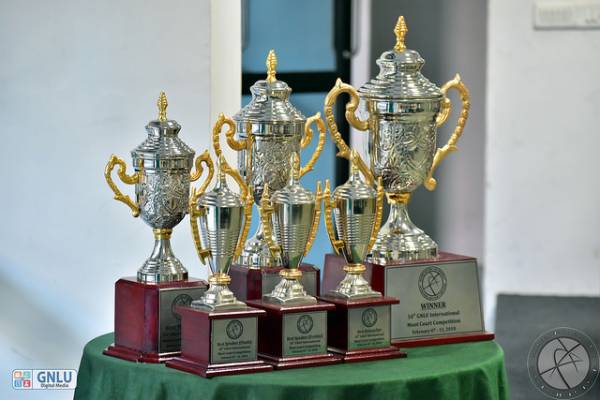
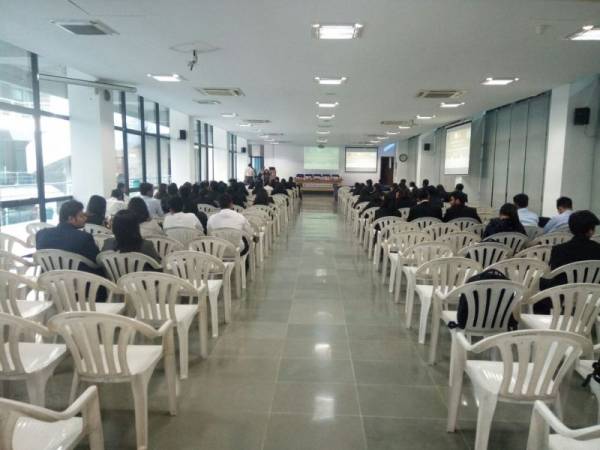
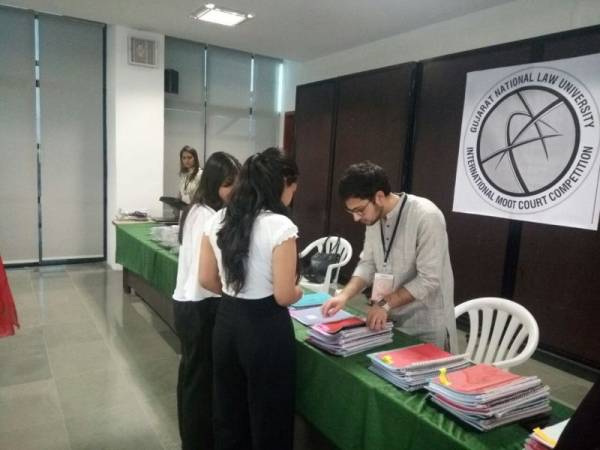
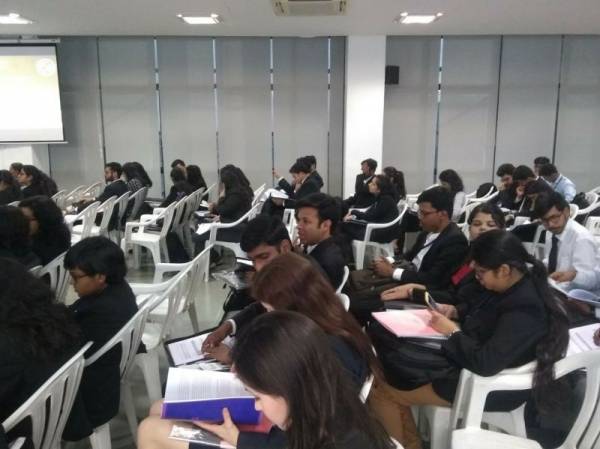
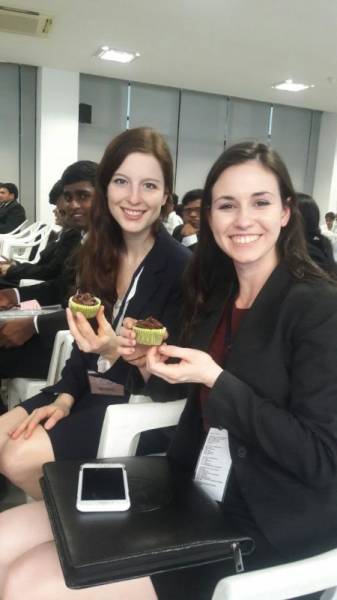
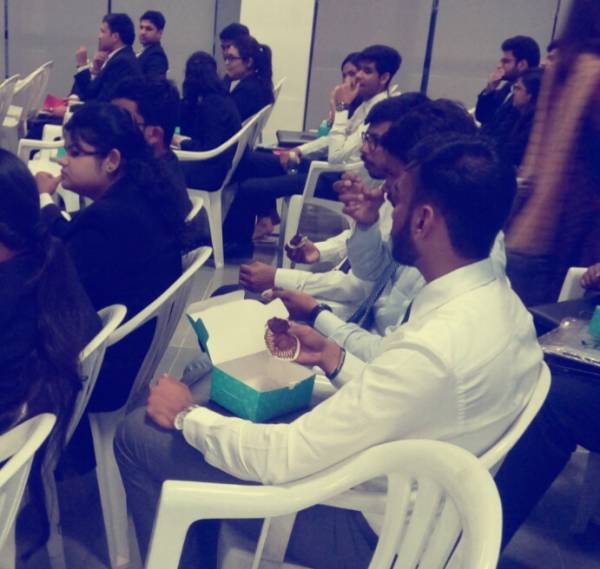
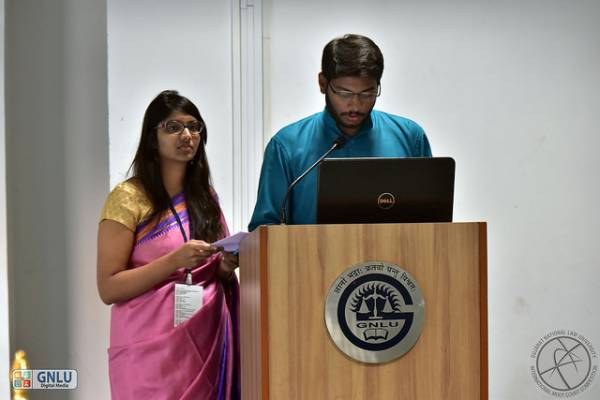
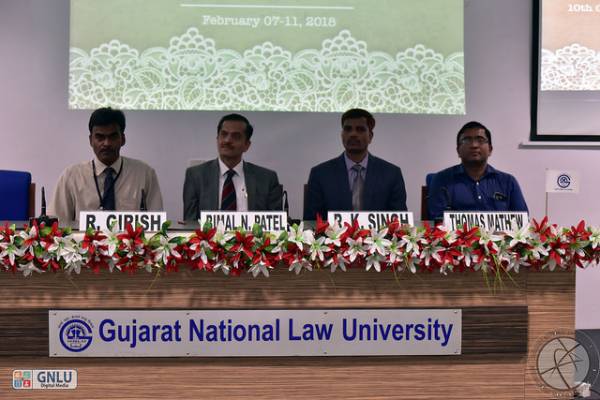
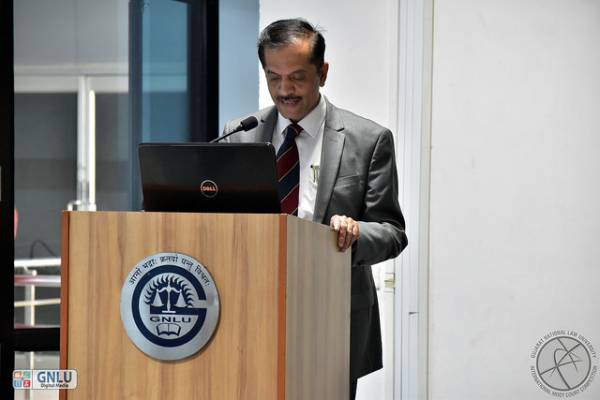
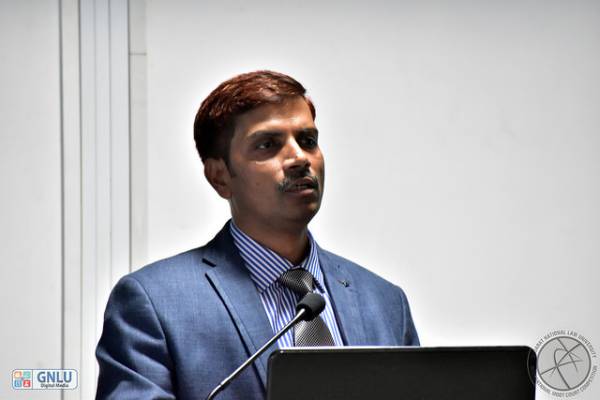
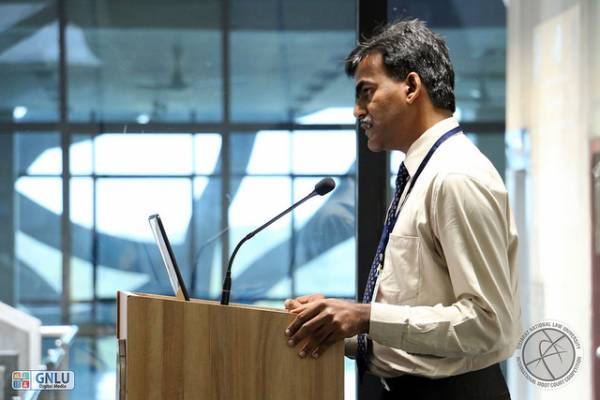
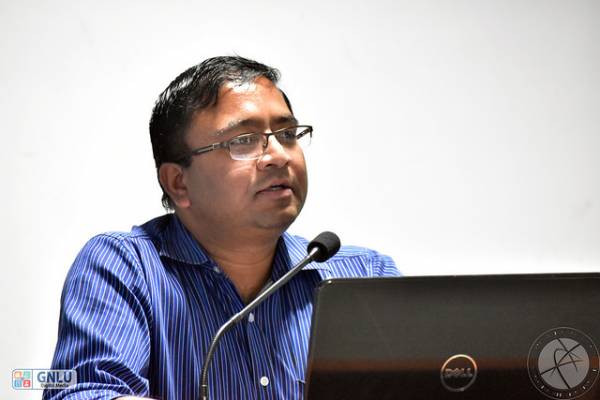
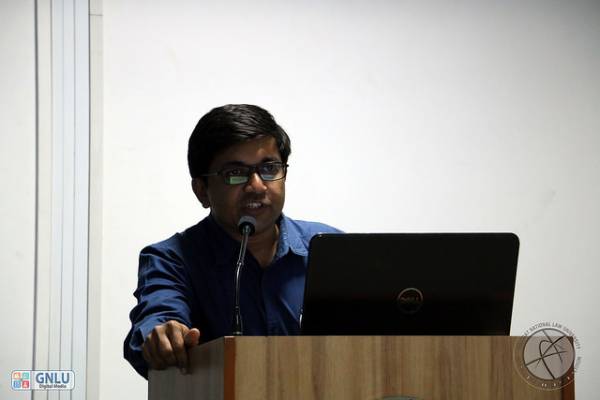
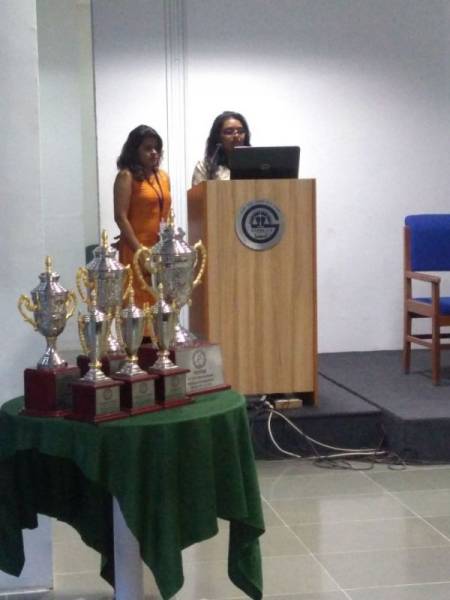
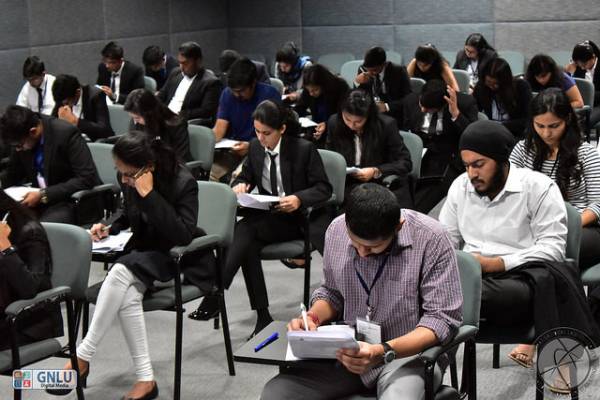
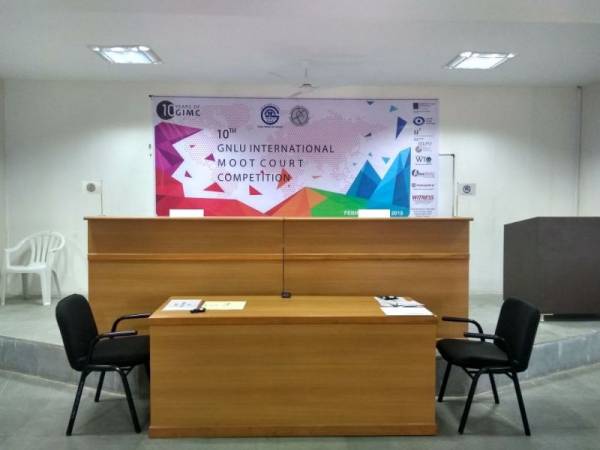
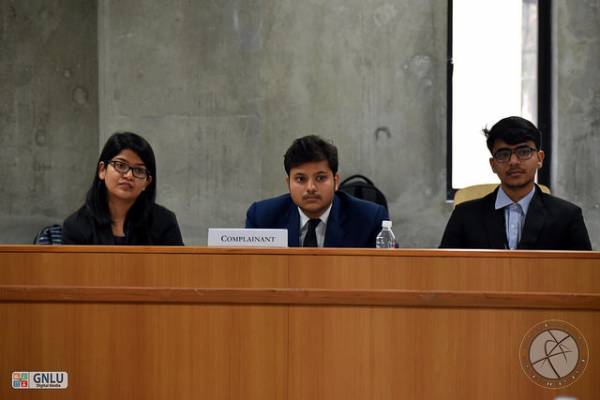
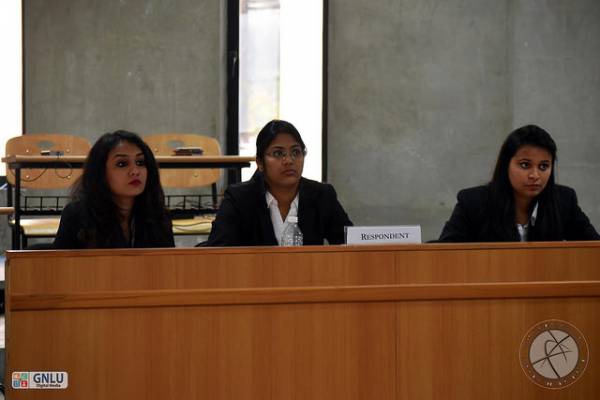
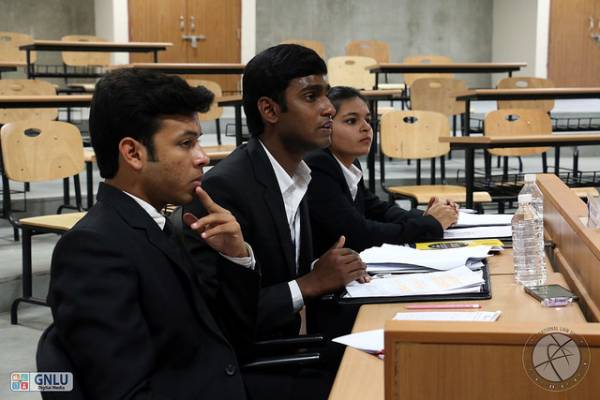
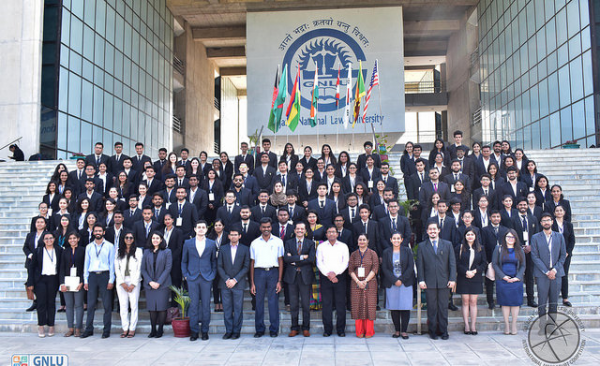
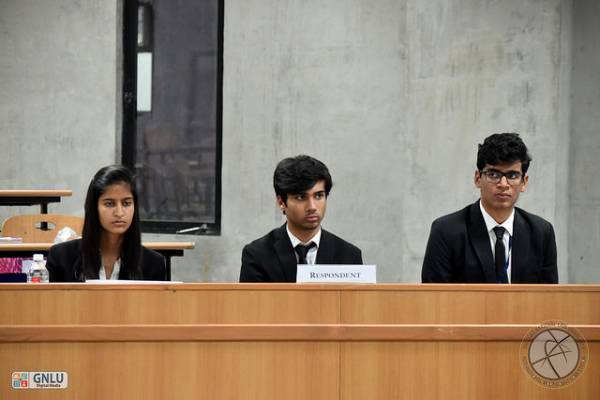
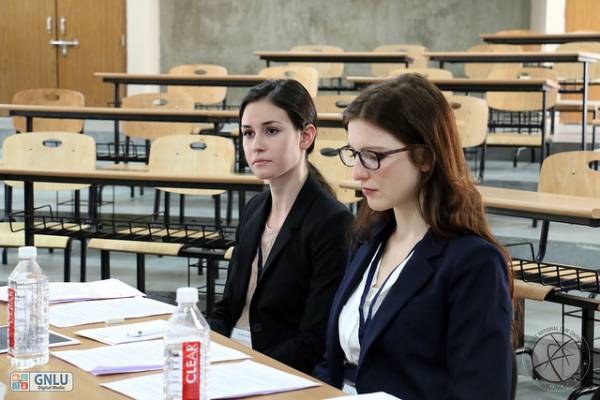
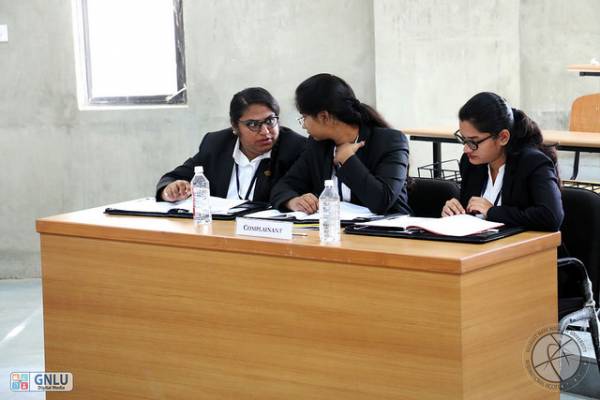
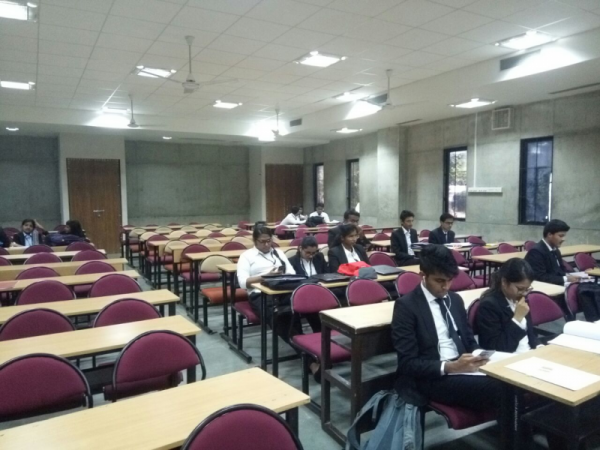
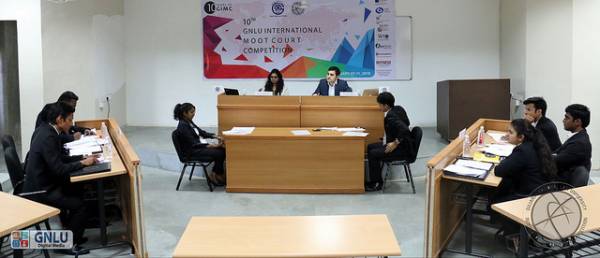
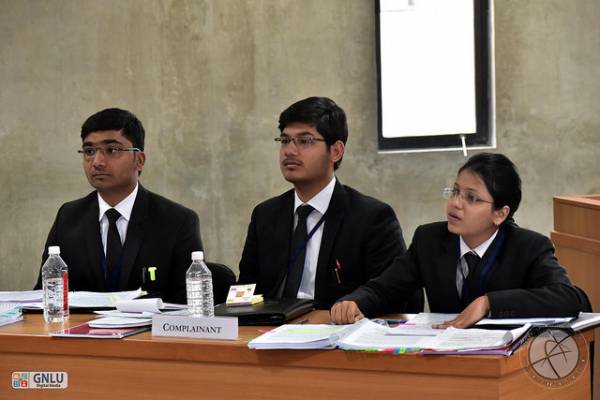
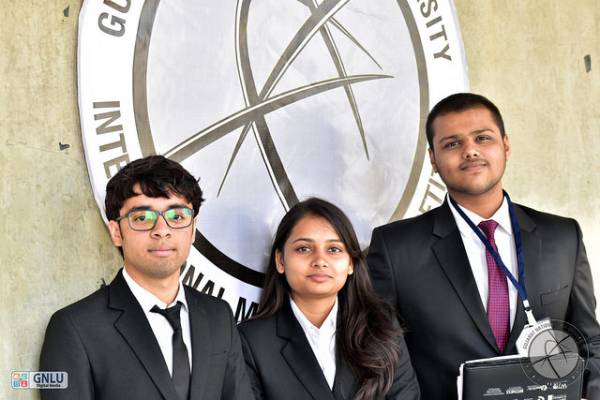
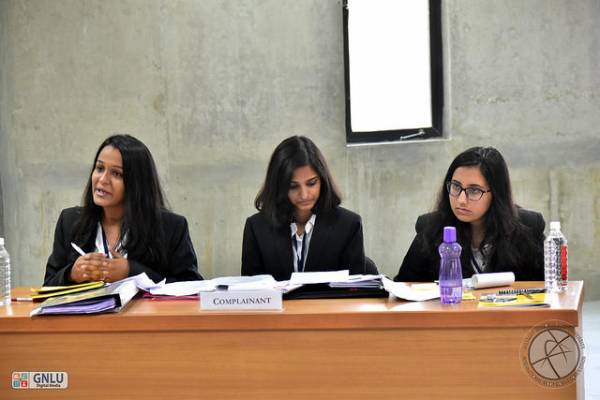
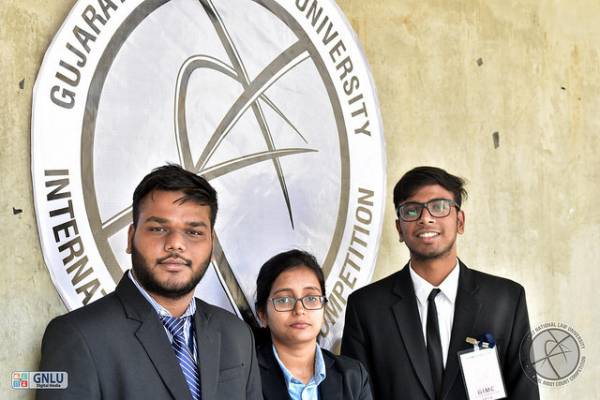
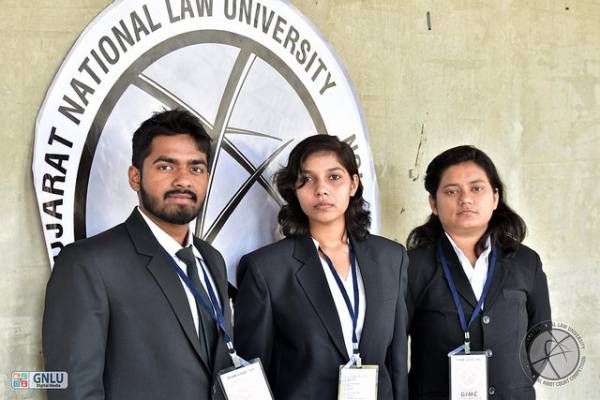
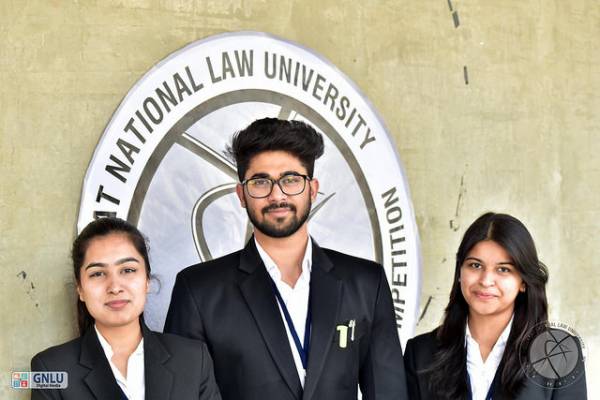
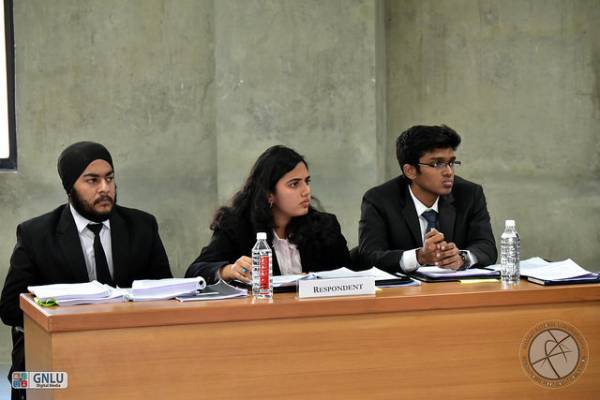
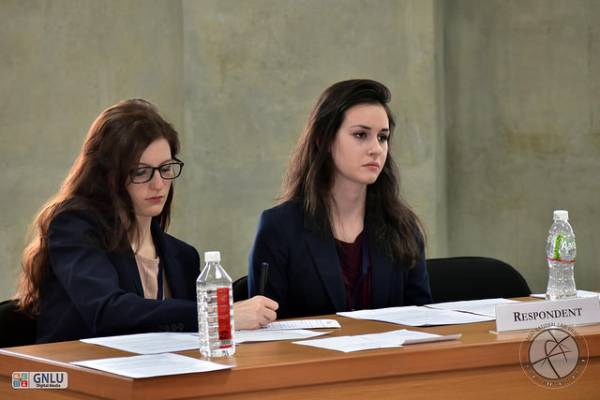
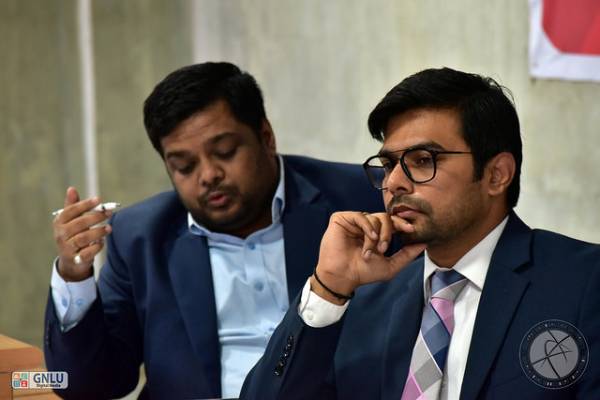
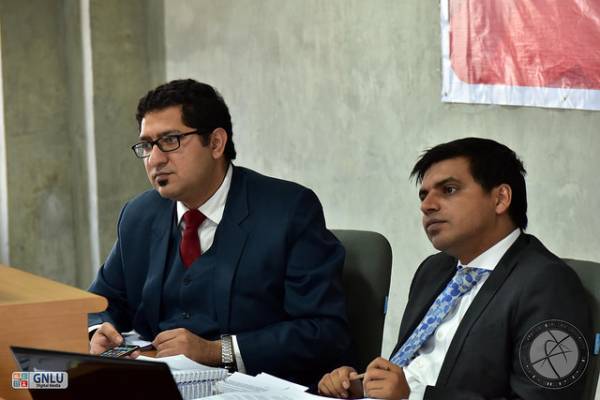
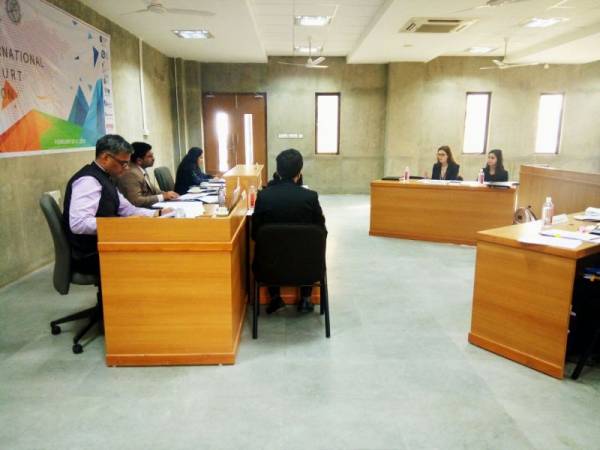
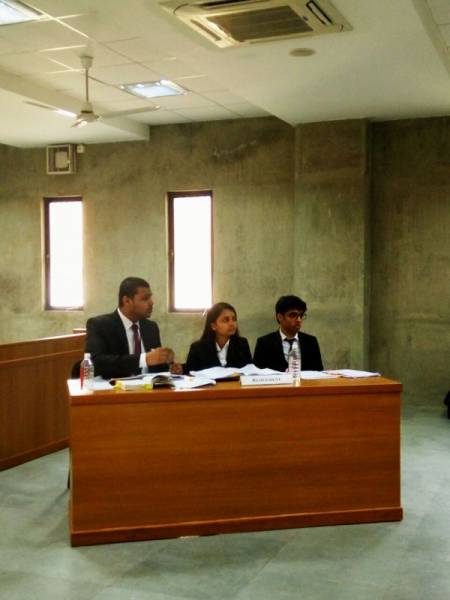
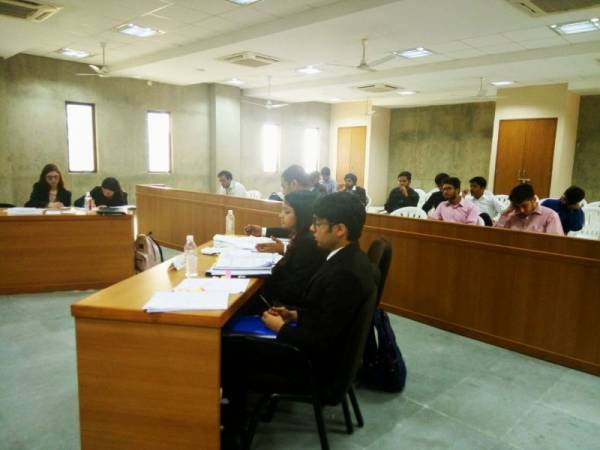
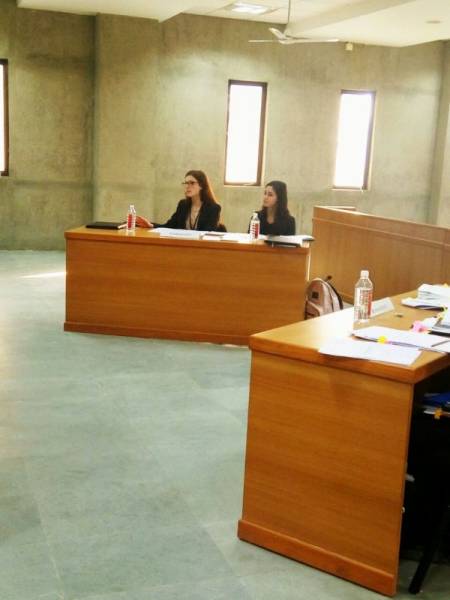
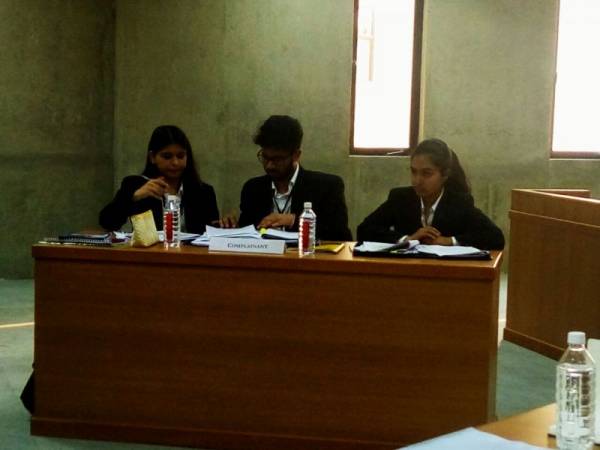
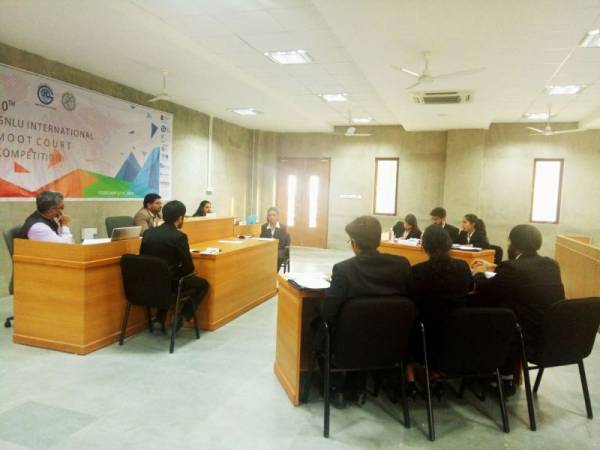
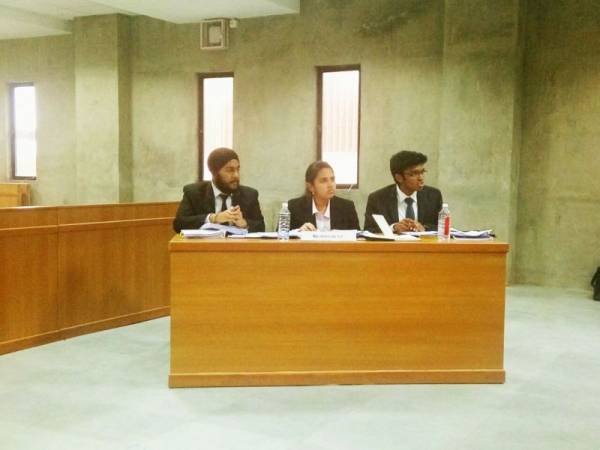
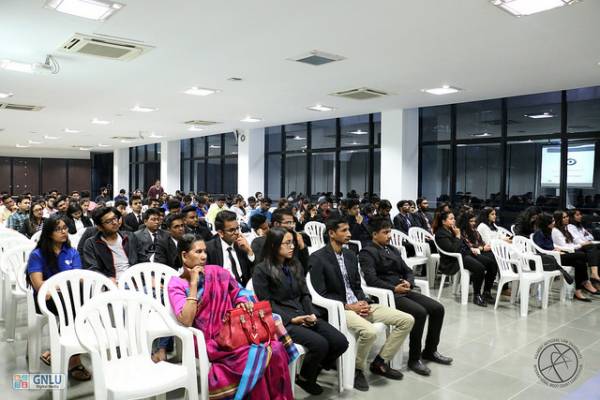
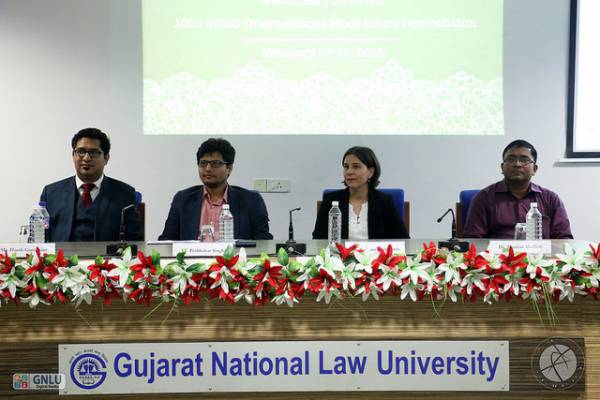
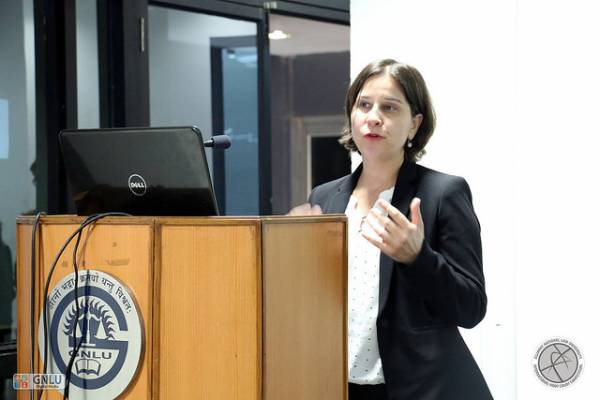
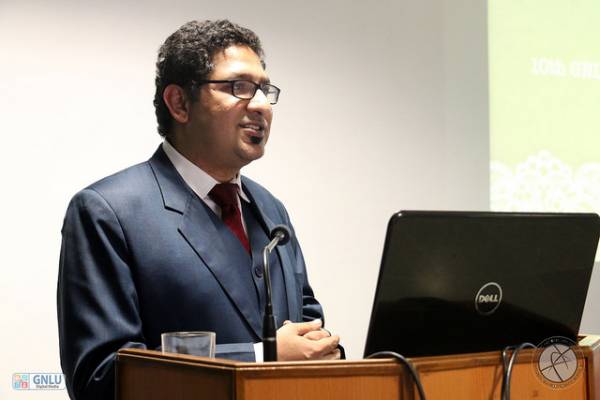
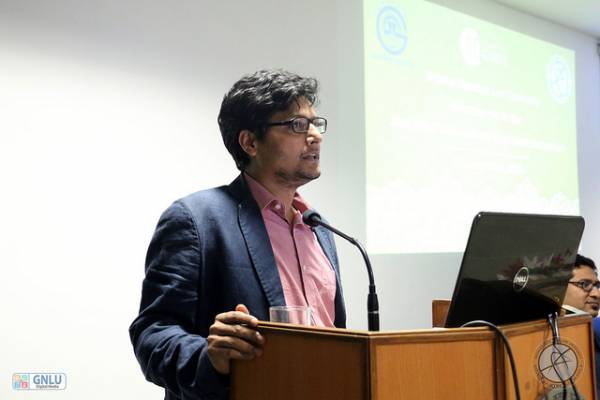
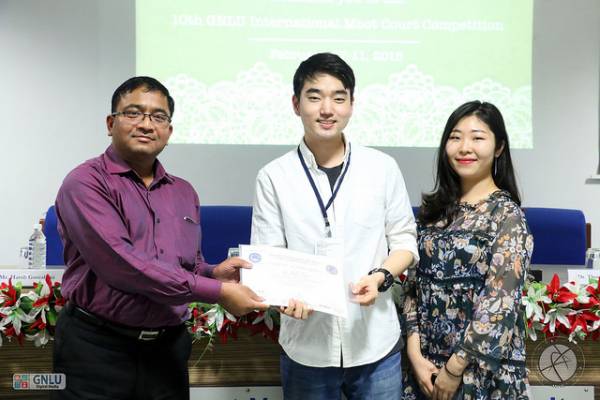
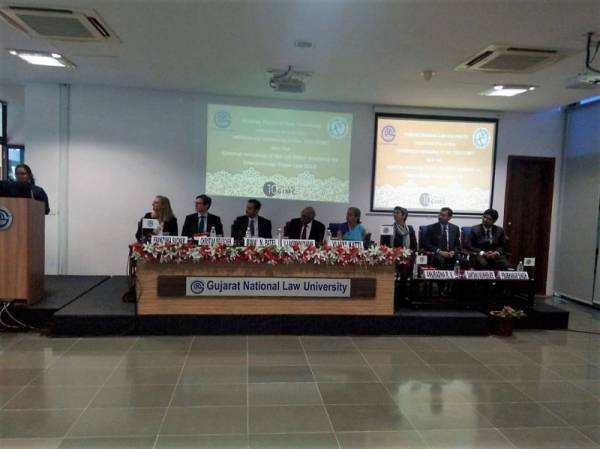
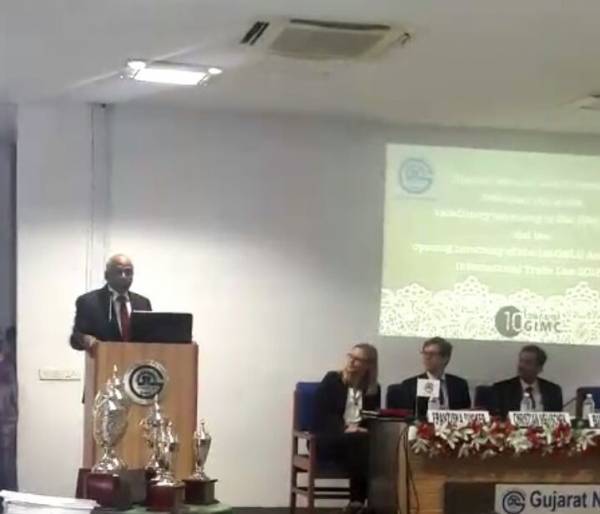
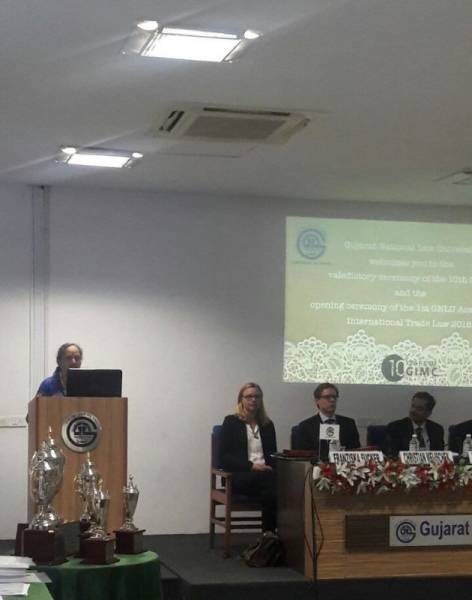
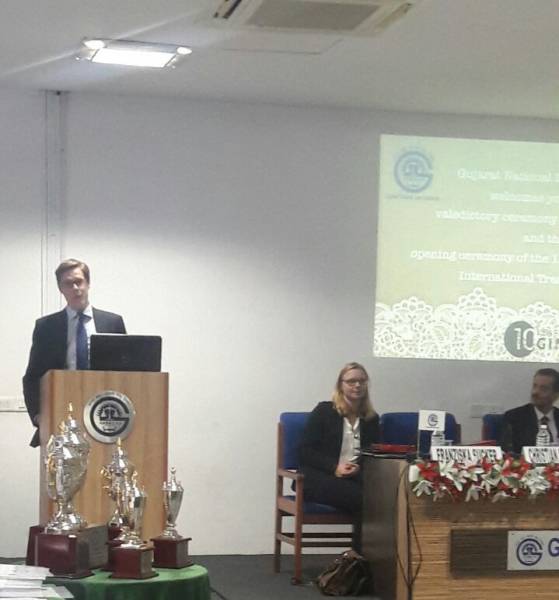
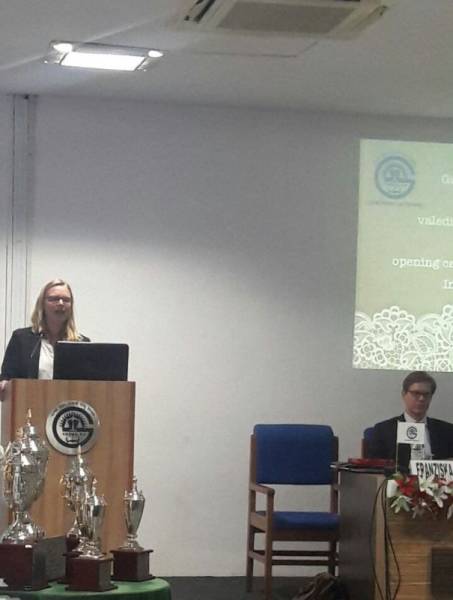
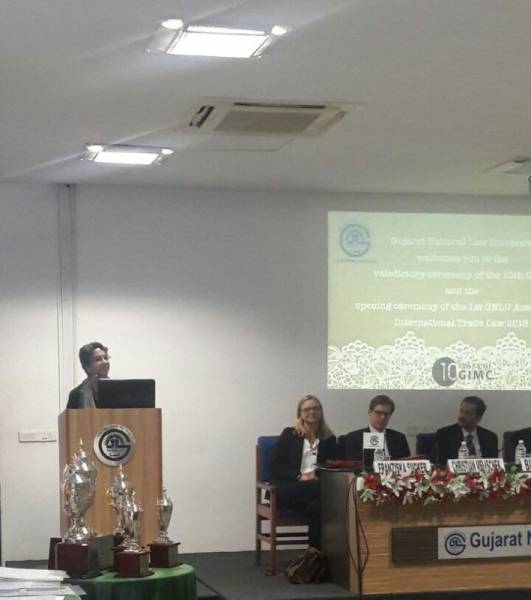
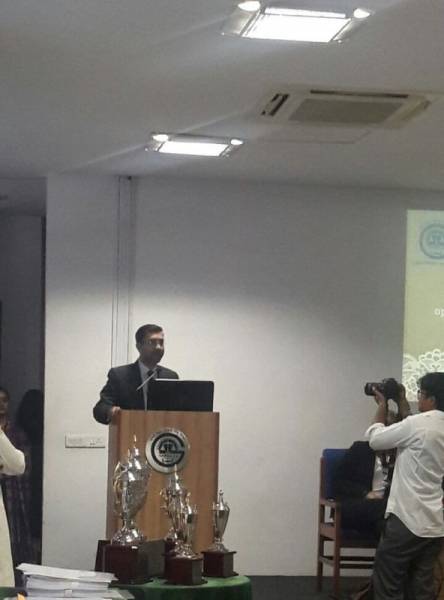
threads most popular
thread most upvoted
comment newest
first oldest
first
threads most popular
thread most upvoted
comment newest
first oldest
first